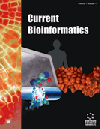
Full text loading...
We use cookies to track usage and preferences.I Understand

An uncommon neurological condition known as Guillain-Barre syndrome (GBS) develops when the body's immunological system unintentionally targets peripheral nerves.
This work aimed to compare scRNA-seq and transcriptome data to find novel gene biomarkers linked to CD4+ T cells and B cells that might potentially be utilized for the diagnosis and assessment of GBS. It aimed to employ scRNA-seq data and bioinformatics tools analysis to identify cell-specific biomarkers for GBS diagnosis and prognosis.
scRNA-seq and microarray datasets from the GEO database were utilized to identify differentially expressed genes (DEGs). Pathway enrichment, identification of potential hub genes, and gene regulatory studies were employed using FunRich, DAVID, STRING, and NetworkAnalyst tools.
After integrating the DEGs and performing a comparative analysis, it was discovered that there were 84 DEGs shared between scRNA-seq and microarray datasets. The presence of signal transduction, immune system, cytokine signaling, NOD-like receptor signaling, and focal adhesion was detected in the most significant gene ontology and metabolic pathways. After generating a protein-protein interaction (PPI) network, we used eleven topological algorithms of the cytoHubba plugin for identifying six key hub genes, including CDC42, PTPRC, SRSF1, HNRNPA2B1, NIPBL, and FOS. Several crucial transcription factors (CHD1, IRF1, FOXC1, GATA2, YY1, E2F1, and CREB1) and two significant microRNAs (hsa-mir-20a-5p and hsa-mir-16-5p) were also discovered as hub gene regulators. The receiver operating characteristics (ROC) curve was used to evaluate the prognostic, expression, and diagnostic capabilities of the six major hub genes, indicating a good scoring value.
Finally, functional enrichment pathway analysis, PPI, and regulatory networks analysis demonstrated the critical functions of the identified key hub genes. After further wet lab research is validated, our research work may offer useful predicted potential biomarkers for the diagnosis and prognosis of GBS.

Article metrics loading...

Full text loading...
References


Data & Media loading...